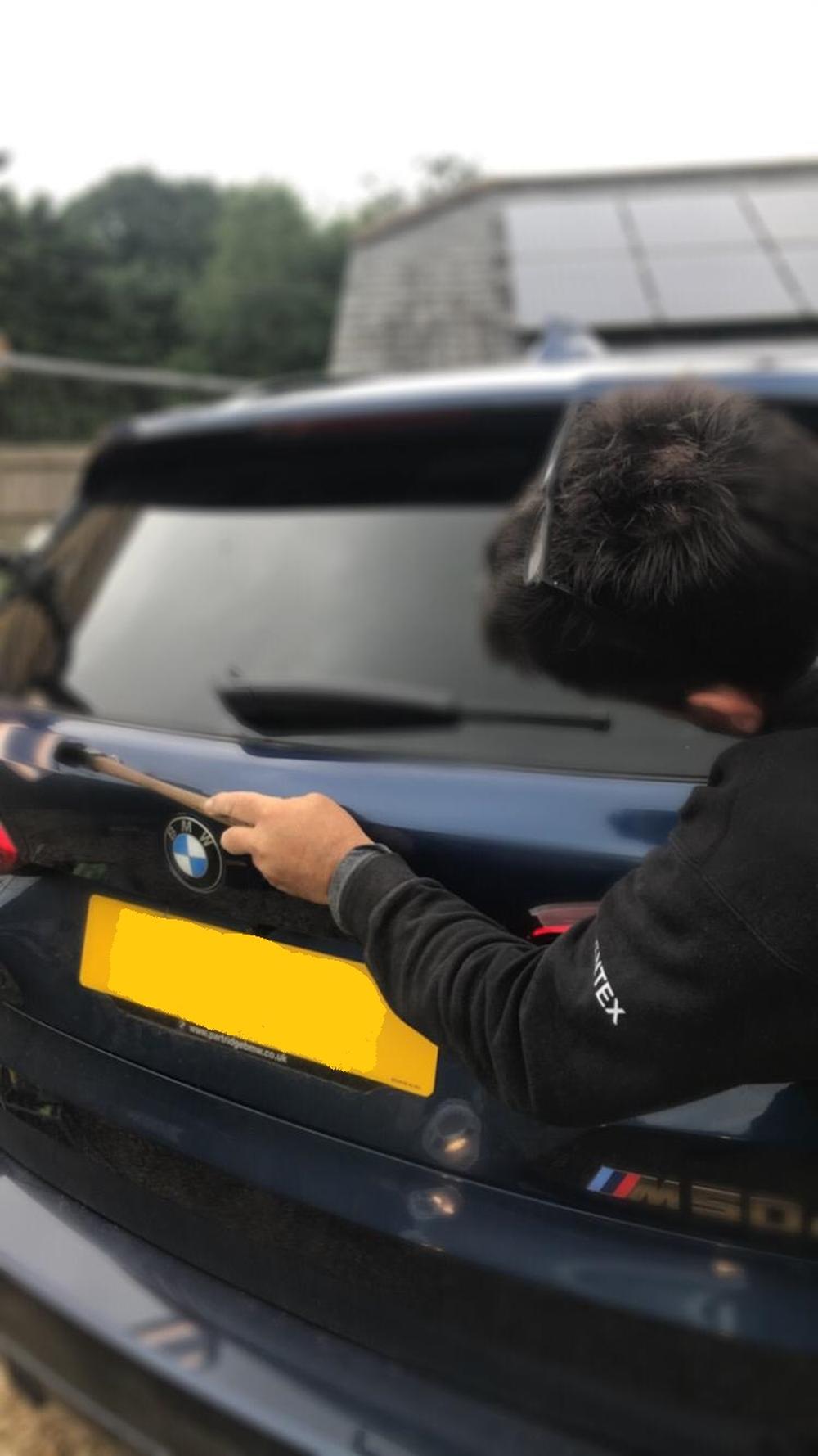Why do you hammer the panel?

To someone who's never seen or had experience of PDR being done before, the sight of a technician using a hammer on their vehicles body work can be slightly worrying.
With larger dents, curved crowns or brows are created at the outer radius. These are crescent shaped bulges which are raised from the rest of the panel. You see this if you push your thumb into an empty drink can just enough to cause a dent, you will see that the harder you push the more pronounced the crowns at the edges become.
We use an array of various tap down tools and hammers to gently knock the crowns back into the panel, this is often called “blending”. Just about every professional dent repairer will have one favourite hammer they use regularly, (I've had mine for over twenty years) it will have been shaped and polished to make it flawless so it doesn't mark paintwork.
_____________________________
Types of dents
Dents obviously vary in size and complexity and the position on the dent on each different panel. Below are two examples of dents in bonnets.

Citroen soft crease in bonnet. Straightforward repair probably a two out of ten.

Finished repair
_________________________

BMW complex dent in bonnet. Difficult repair probably an eight out of ten

This is what a PDR technician sees.
Black = Impact points
Yellow = Stretch
Blue = Crowns
Green = Ridged edge
White = The whole affected area
This is a very complex repair with a lot going on and requires several different techniques to rectify. Black is the point or points of impact, in this case it was a mountain bike that fell off the wall in the customers garage. Yellow is the deepest part of the dent which in some cases can stretch the metal slightly, it actually helps to remove the stretch if it's close to a bodyline. Blue are the crowns, nearly all dents other than the smallest of dings will have a crown or multiple crowns. Green is the ridged edge, common on bigger dents close to the edge of a panel and is caused by the inner panel. White is the whole affected area that will need work. This damage on a scale of 1/10 is probably an 8 and being on a bonnet which is a flat surface viewable from 360 degrees the repair needs to be perfect. This was a BMW M140i and the customer had been told it needed a new bonnet.

Finished repair
_______________________________
Do you offer a guarantee or warranty?
If we're not able to remove the dent to your complete satisfaction then we will not charge you. Once the dent has been removed it will never come back...unless of course someone gives you a new dent.
The paint is damaged, is it worth using your service?
If the paint is only lightly scuffed with a faint mark that will polish out or has a very small chip in it which can be touched in then yes it probably is, if however the paint has been scuffed all the way back to the metal or has large cracks in it then a conventional body shop repair would be more appropriate.
Does the dent just pop out?
No. The dent is lifted with a series of pushes. We start with reproducing the original shape and then go on to detail and blend in with the rest of the paint finish to make it invisible. Some large complex dents can take thousands of pushes to achieve a flawless repair. Hand to eye co-ordination must be millimetre perfect, it's a very precise and skilled process which requires a lot of patience.
Does metal have memory?
Simple answer....no. When a panel is made, flat sheets of mild steel or aluminum were stamped into shape in a huge punch and die under 100's of tons of pressure to form a panel. If steel had memory your panels would be constantly straining to be that flat piece of steel again.
When we remove a dent we are basically sculpting by hand the affected area back to the shape it was stamped into. It would be great if metal had some sort of memory but unfortunately it doesn't.
With most of the bigger, uglier dents the area affected will be work hardened through impact and now "locked up". The area is now so stiff that it will require time to loosen it up and start to remove the pressure before we can get into the detail.
How long does it take?
Small and medium dents anywhere from 30 mins to an hour and a half. Large dents anywhere from an hour and a half to four hours. Hail repairs anything up to two days.

